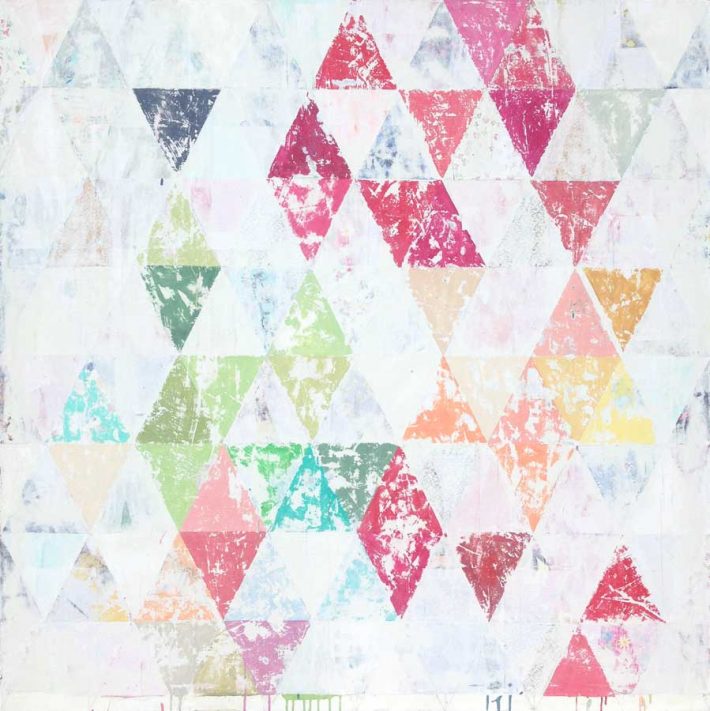All You Need Know
Arthur Roger Gallery
New Orleans, LA
BY MARIAN S. MCLELLAN
New Orleans Art Review | Fall 2015

Nicole Charbonnet: Pattern (Climb Every Mountain No. 3), 2013-15.
Acrylic, plaster, paper on canvas, 60” high.
IT CAN’T BE stated enough, that in a world increasingly dependent upon the Internet for information and interaction, we grow increasingly distanced from physical time and place. And rather than being more connected, we are ever increasingly disconnected. Which is perhaps in part why we are so ineffectual at dealing with the strife at hand. Stagnantly we stand, caught in the quandary of Bud and Mary Sue’s “Pleasantville.”
Granted, this is not a particularly negative stance to occupy since facing the consequence of real time and place is a channel most prefer to fast-forward.
And so, we often seek escape whenever our complacency is at risk. And, like Bud and Mary Sue, we are never quite here, rather, we are forever elsewhere. Enter, in place of Don Knotts, three artists with New Orleans’ ties who in earnest focus our attention to their very tactile surfaces, thus affording us the freedom to savor the immediate. In other words, what you see is what Nicole Charbonnet, Anne C. Nelson, and George Dunbar intend for you to see.
Perhaps a bit controlling of our collectively distracted nature, but on the other hand, such an immediate use of our time can be beneficial, much like a beautiful color or flower. Orchestrated using patterns borrowed from sources such as stenciled wallpaper and other artists like Bridget Riley and Orla Kiely, Nicole Charbonnet’s exhibit of acrylic, plaster and paper on canvas paintings at Arthur Roger Gallery is forthright with her overall title of “All You Need Know.”
Charbonnet, an established New Orleans artist, has filled three gallery spaces with twenty-five, textured paintings, some having evolved over four to eight years, making us privy to her personal calendar and to the layers of time. Her statement asserts “Using material from our shared cultural heritage not only stimulates a sense of recognition and nostalgia but also informs current social and political situations.”
A stressed society does repeat itself, though certainly repetition can be an immediate path to harmony and comfort, much like an old quilt, which several of Charbonnet’s pieces strongly evoke, such as Pattern (Climb Every Mountain No. 3) with its patches of tattered triangles. As with all of Charbonnet’s works on view, Pattern (Flowers No. 8) takes place against a seductive, fresco-white wall embedded with fragmented nuances of recycled papers such as letters and books. Here, ordered “stripes” of faded blue flowers captivate both surface and viewer amid a field of serenity.
Many of Charbonnet’s titles include reference to the Irish fashion designer Kiely. The predominately white Erased Orla Kiely No. 3 repeats vertical patterns of Kiely’s signature leaf design as does the faintly colored Erased Orla Kiely No. 4.
This is an excerpt. The article may be read in full here.
